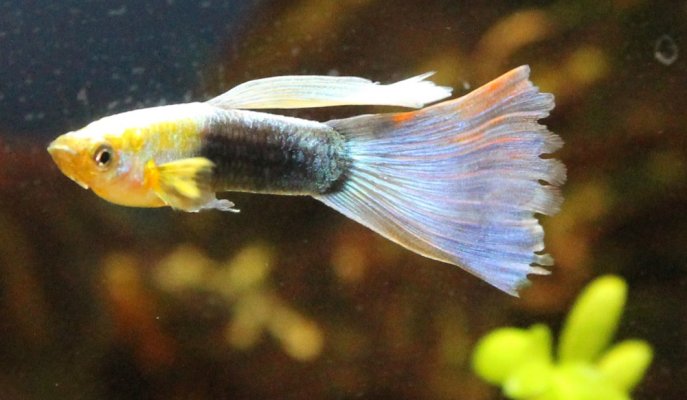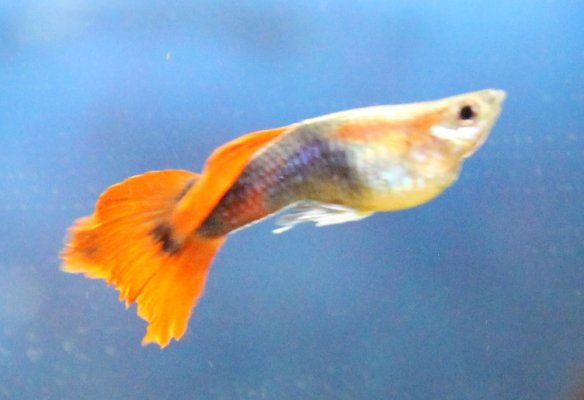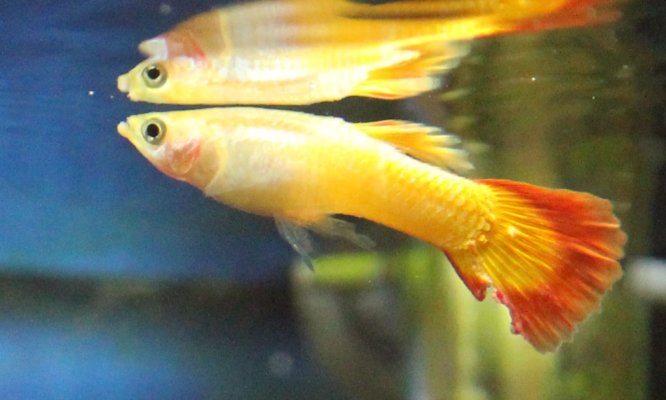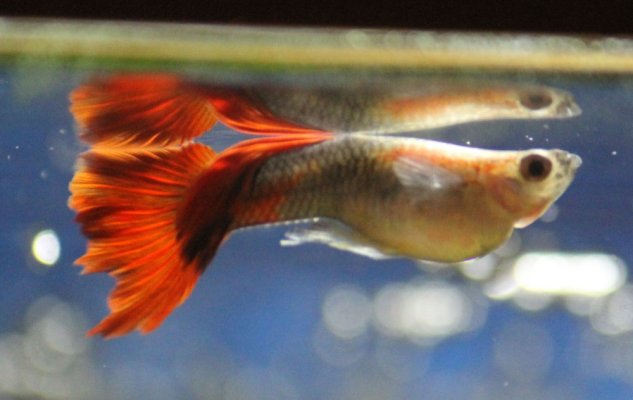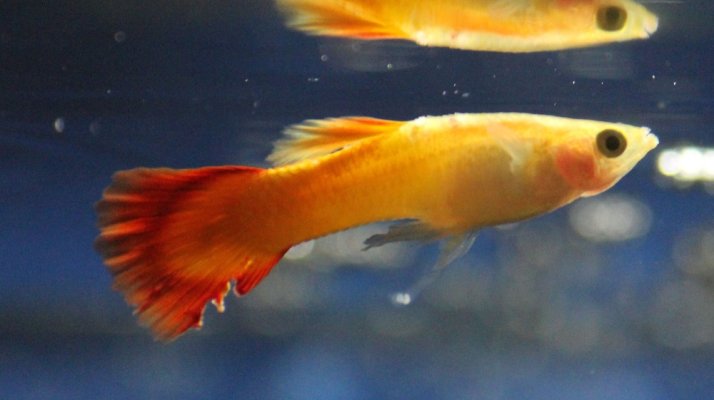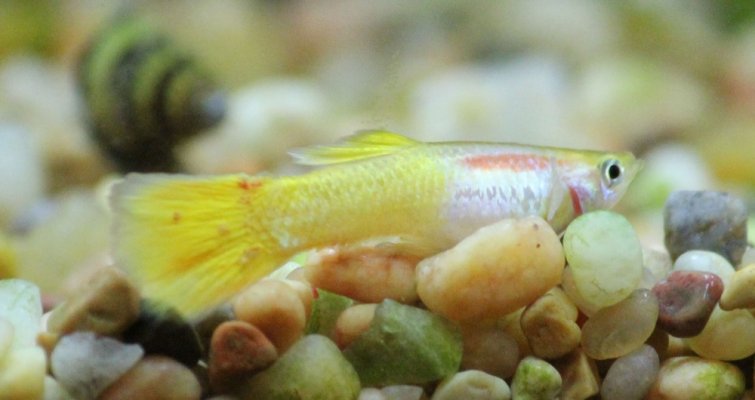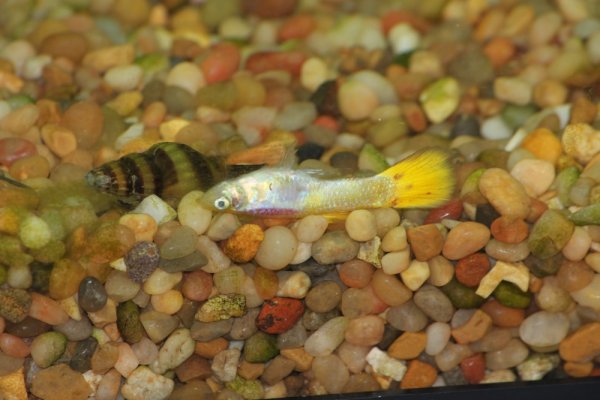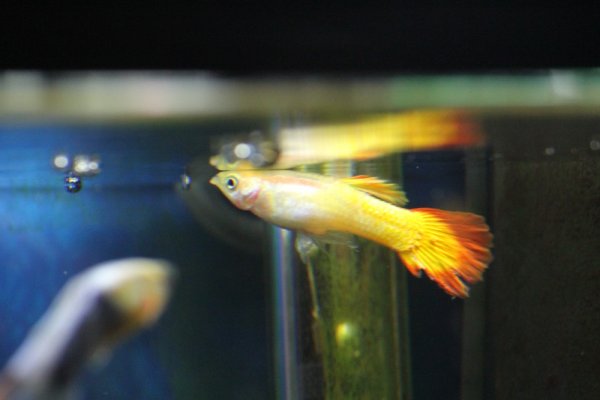Tank specs:
10 gallon aquarium
Wisper 10i filter
Temp = 78F
Ammonia = 0, Nitrite = 0, Nitrate < 5ppm
PH = 7.4
Tank is stocked with two guppies, four cherry shrimp, 10 pond snails, 2 nerite snails, 1 assassin snail.
I am a newbie and have had this tank setup for 9 months. I have had a lot of fish die over the 9 months. I have gone through 5 guppies, and 9 pygmy cories (not all at the same time, I try to keep the bioload low).
I test the water regularly and have never had any ammonia or nitrite spikes. I do a 30% water change every 2 weeks and have never had nitrates go above 10ppm.
I have a blue guppy that has been a survivor since day one. He has thrived while his tank mates have gone on to greener pastures. When I got the guppy 9 months ago its tail was 100% blue. One month ago his tail started looking a bit ragged and started turning red. It has been like this for a month now and he seems healthy otherwise.
Is the red color a sign of disease? If so could that explain why I keep having fish die even though my water quality is good? If so, how do I treat it?
Here is a photo of the blue guppy its tankmate. The black and red guppy has not had any color changes, but its tail is also frayed.
10 gallon aquarium
Wisper 10i filter
Temp = 78F
Ammonia = 0, Nitrite = 0, Nitrate < 5ppm
PH = 7.4
Tank is stocked with two guppies, four cherry shrimp, 10 pond snails, 2 nerite snails, 1 assassin snail.
I am a newbie and have had this tank setup for 9 months. I have had a lot of fish die over the 9 months. I have gone through 5 guppies, and 9 pygmy cories (not all at the same time, I try to keep the bioload low).
I test the water regularly and have never had any ammonia or nitrite spikes. I do a 30% water change every 2 weeks and have never had nitrates go above 10ppm.
I have a blue guppy that has been a survivor since day one. He has thrived while his tank mates have gone on to greener pastures. When I got the guppy 9 months ago its tail was 100% blue. One month ago his tail started looking a bit ragged and started turning red. It has been like this for a month now and he seems healthy otherwise.
Is the red color a sign of disease? If so could that explain why I keep having fish die even though my water quality is good? If so, how do I treat it?
Here is a photo of the blue guppy its tankmate. The black and red guppy has not had any color changes, but its tail is also frayed.

